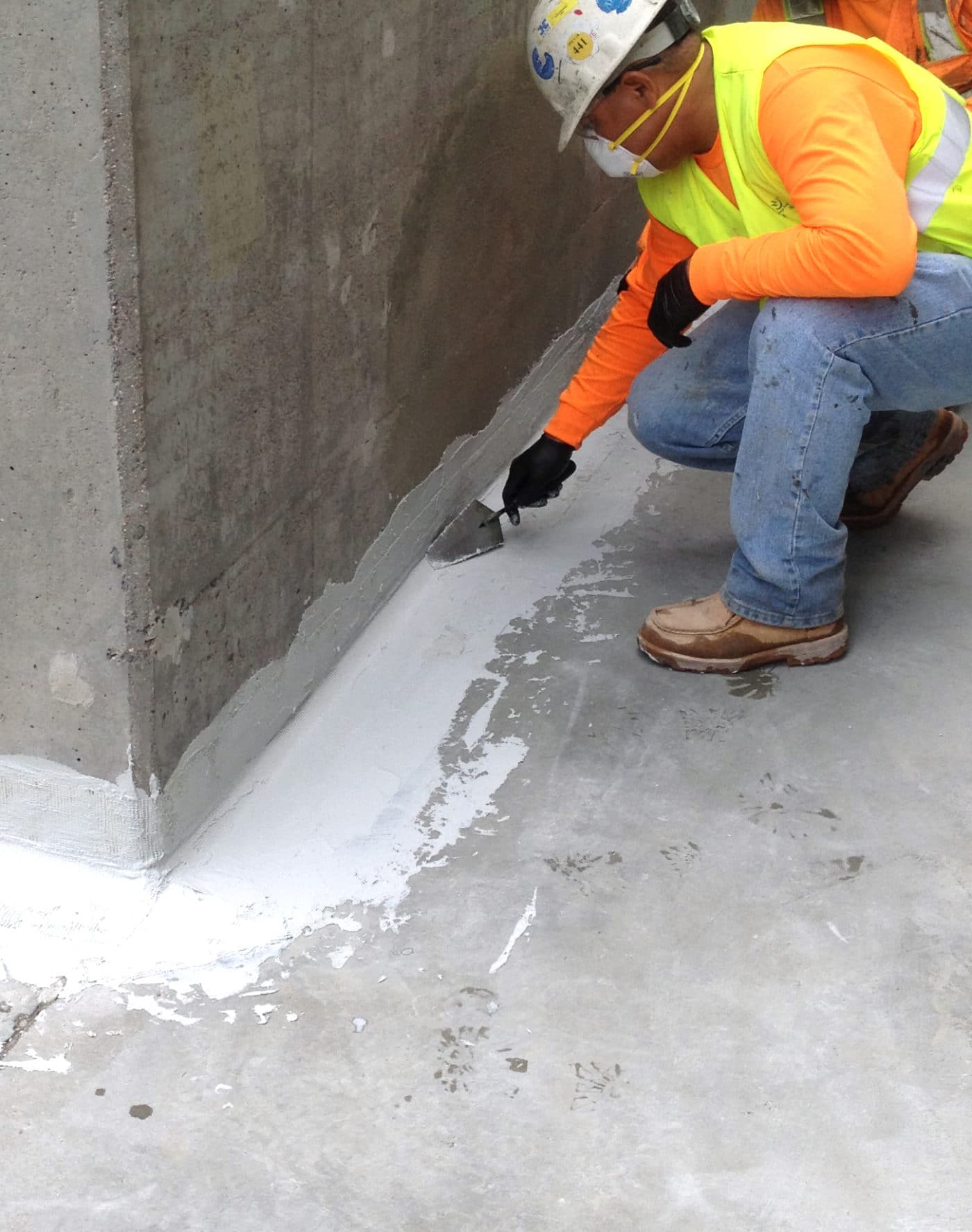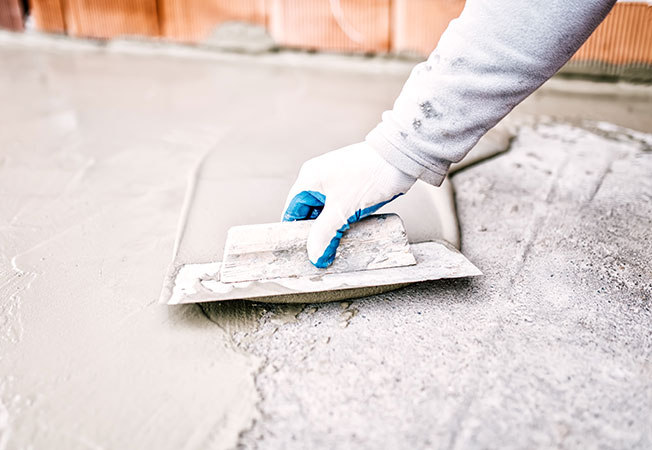Choosing the Right Drainage & waterproofing company Omaha: Your Local Guide
Exactly How Waterproofing Works: A Comprehensive Take A Look At Strategies and Technologies
Waterproofing is important for safeguarding frameworks from moisture-related damage. It involves various methods and innovations that create barriers against water invasion. Typical techniques, such as compacted clay, exist together with modern technologies like liquid-applied membrane layers. Understanding the subtleties of these approaches is crucial for efficient application. Nevertheless, the efficiency of any waterproofing remedy pivots not just on the strategies used however also on ongoing upkeep and examination. What are the crucial aspects that affect lasting performance?
Understanding the Essentials of Waterproofing
Waterproofing is a vital procedure that safeguards structures from water intrusion, which can bring about considerable damage with time. This method includes the application of various materials and methods designed to produce an obstacle versus moisture. The key objective is to avoid water from passing through surfaces, which can trigger degeneration, mold development, and architectural instability.Various elements affect the option of waterproofing approach, consisting of the kind of framework, its place, and environmental problems. Recognizing the physics of water motion and the residential or commercial properties of various materials is crucial in picking an efficient waterproofing solution.Effective waterproofing not only safeguards buildings however also boosts their long life and integrity. Generally, it is incorporated into the style stage of building to assure detailed security. As recognition of water-related issues grows, the significance of recognizing waterproofing basics comes to be significantly clear to architects, home builders, and residential or commercial property owners alike.
Standard Waterproofing Approaches
Standard waterproofing methods have been utilized for centuries, counting on tried and true techniques and materials to protect frameworks from water damage. One of the earliest approaches entails making use of clay, which, when compacted, creates an all-natural barrier against moisture. Furthermore, bitumen, a sticky, black material derived from petroleum, has been used for its water-resistant properties, typically related to roofing systems and foundations.Another technique involves the application of lime-based plasters, which provide a breathable layer that enables moisture to escape while protecting against water ingress. Thatch roof, a typical method still seen in some societies, supplies excellent waterproofing as a result of its firmly packed straw layers.Moreover, making use of rock and brick has actually been popular, as these materials are naturally resistant to water when effectively installed. On the whole, conventional waterproofing methods stress the importance of picking suitable materials and construction practices to enhance sturdiness against water invasion.
Modern Waterproofing Technologies
Innovations in contemporary waterproofing technologies have actually revolutionized the method frameworks are safeguarded from water damage. Cutting-edge strategies such as liquid-applied membrane layers and sophisticated sealants have actually improved the performance and convenience of waterproofing options. These technologies permit for seamless application, minimizing the danger of leakages and guaranteeing detailed coverage over complicated surfaces.Moreover, the assimilation of wise modern technologies, such as dampness sensing units and automated monitoring systems, makes it possible for real-time analysis of waterproofing efficiency. This aggressive technique facilitates timely maintenance and minimizes long-term repair work costs.Additionally, innovations in spray-applied layers provide fast application and excellent bond, adjusting to numerous substratums while giving robust security. Strategies like polymer-modified systems additionally enhance flexibility and durability, making them suitable for varied environments. Overall, modern-day waterproofing technologies not just alleviate water invasion but likewise add to the long life and sustainability of frameworks, marking a considerable shift in the industry.
Products Used in Waterproofing
The performance of waterproofing solutions heavily counts on the products utilized in their application. Various products are employed to create barriers versus water ingress, each with distinct homes matched for various atmospheres. Frequently used products consist of membranes, finishes, and sealants.Liquid-applied membrane layers, usually made from polyurethane or acrylic, create a seamless barrier that adjusts to complex surface areas. Sheet membranes, normally created from rubber or polycarbonate, offer resilience and are optimal for bigger locations. Additionally, cementitious waterproofing products, made up of cementitious compounds, provide excellent bond and flexibility.Sealants made from silicone or polyurethane are essential for joints and seams, ensuring extensive protection. Additionally, innovative materials, such as geo-composite membranes, integrate multiple features, boosting efficiency. Overall, the choice of waterproofing products is crucial in accomplishing durable and efficient water resistance, tailored to certain job requirements and environmental problems.
Typical Applications of Waterproofing
Waterproofing plays an essential function in various industries, waterproofing durock guaranteeing the long life and honesty of structures. Usual applications consist of domestic services that secure homes, industrial infrastructure that safeguards companies, and industrial settings that call for durable protection against wetness. Comprehending these applications highlights the value of waterproofing in preserving both security and functionality across various environments.
Residential Waterproofing Solutions
Several home owners face challenges with wetness breach, making effective residential waterproofing remedies important. Numerous techniques exist to resolve this issue, including interior and exterior waterproofing systems. Interior solutions usually include the application of sealers and layers to cellar walls, which help avoid water infiltration. Outside approaches normally include the installation of drainage systems and water-proof membrane layers that Your Domain Name draw away water away from the foundation.Additionally, homeowners might consider sump pumps to eliminate water buildup and dehumidifiers to control moisture degrees. Proper grading and making use of seamless gutters likewise play an essential duty in managing water flow around the home. By executing these approaches, home owners can greatly reduce the risk of water damages and mold growth, ensuring a completely dry and risk-free living atmosphere.

Industrial Facilities Security
Effective waterproofing options play an essential function in the security of industrial facilities. Water Solutions. These strategies are essential for protecting buildings, auto parking frameworks, and bridges from water damage, which can jeopardize structural honesty and bring about costly repair work. Usual applications consist of the setup of membranes, layers, and sealers that create obstacles versus wetness seepage. Areas such as cellars, roof coverings, and exterior wall surfaces are typically prioritized to guarantee durability and toughness. In addition, waterproofing systems can enhance energy efficiency by stopping water-related issues that may cause mold and mildew development and wear and tear. By applying durable waterproofing steps, residential property owners can secure their investments and keep operational performance, inevitably adding to the general sustainability of business facilities
Industrial Applications Introduction
While various sectors encounter one-of-a-kind difficulties, the need for trustworthy waterproofing remedies remains a consistent in industrial applications. Industries such as production, construction, and power often encounter atmospheres where moisture direct exposure can endanger structural stability and operational effectiveness. In producing facilities, waterproofing is crucial for shielding machinery and materials from water damages. In building, it safeguards foundations and cellars versus groundwater seepage. The energy market counts on waterproofing for the defense of tools in hydroelectric plants and overseas structures. Furthermore, food handling markets make use of waterproofing to guarantee hygiene and conformity with security requirements. Overall, reliable waterproofing options are essential for enhancing durability, safety and security, and productivity across various industrial setups.
Maintenance and Longevity of Waterproofing Solutions
Waterproofing options are made to supply long-lasting protection versus wetness invasion, routine maintenance is crucial to ensure their performance and long life. Routine assessments play a substantial function in recognizing possible problems such as cracks, peeling, or indicators of water damages. Addressing these troubles immediately can prevent more damage and costly repairs.Additionally, cleaning the surface area of waterproofed locations aids eliminate dust and find out here now particles that might jeopardize the integrity of the waterproofing obstacle. It's likewise advisable to reapply protective coverings or sealers as advised by makers to keep perfect efficiency. Environmental elements, such as UV direct exposure and severe weather condition conditions, can influence the life expectancy of waterproofing materials, making normal evaluation vital
Frequently Asked Concerns
Can Waterproofing Be Applied in Cold Weather?
The concern of applying waterproofing in chilly climate elevates issues regarding bond and treating. Lots of items may not carry out at their finest in low temperatures, necessitating careful selection and factor to consider of specific standards for effective application.
Just How Lengthy Does Waterproofing Commonly Last?
The duration of waterproofing performance varies based on products and ecological aspects. Usually, it can last from 5 to 10 years, but regular maintenance and evaluations are important to assure peak performance and longevity.
Is DIY Waterproofing Effective and Safe?
The efficiency and safety of do it yourself waterproofing rely on numerous aspects, consisting of material high quality and application technique. While some individuals achieve acceptable outcomes, others may encounter concerns that jeopardize long-term protection and architectural honesty.
What Are the Indicators of Failing Waterproofing?
Signs of stopping working waterproofing include visible water discolorations, peeling off paint, mold growth, stuffy odors, and moisture in wall surfaces or ceilings - French drain installation Omaha. These indications suggest compromised barriers, necessitating timely examination and possible remediation to avoid more damage
Exactly how Do I Pick the Right Waterproofing Contractor?
